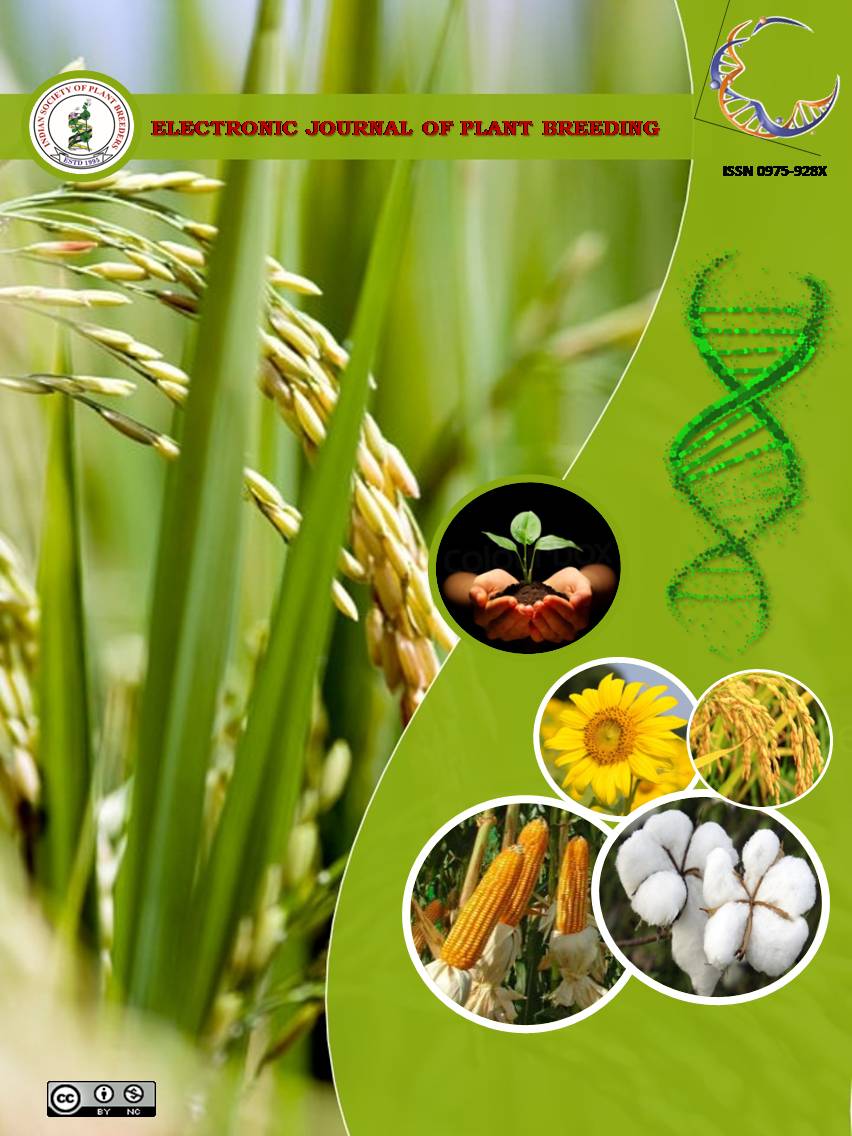Analysis of genetic diversity in sesame (Sesamum indicum L.) advanced breeding lines and varieties collected from major breeding centers in India
Abstract
Genetic diversity study was carried out among 41 sesame genotypes using seed yield and its component characters. Based on the present investigation the 41sesame genotypes were grouped into seven clusters suggesting that considerable amount of genetic diversity present across genotypes. The maximum diversity was contributed by capsules per plant followed by number of branches per plant, plant height and days to maturity. Cluster II was the largest one comprising of 17 genotypes followed by cluster I with 12 genotypes, cluster IV with five genotypes, cluster III with four genotypes, cluster V,VI, and VII, were represented by each single genotype indicating high degree of heterogeneity among the genotypes.The maximum inter cluster distance was observed between IV and VI clusters followed by clusters IV and V and clusters VI and VII while it was low between clusters V and VI, followed by clusters I and V, clusters II and VII. Maximum intra cluster distance was observed in cluster VI, followed by cluster IV, cluster III, cluster II and cluster I. The inter cluster distance in most of the cases were higher than the intra-cluster distance indicating wider genetic diversity among the genotypes of different groups. Four characters viz., capsules per plant, followed by number of branches, plant height and days to maturity contributed more than 90% towards genetic divergence. Hence, these four characters are very important for selection indices.

It is certified that:
- The corresponding author is fully responsible for any disputes arising due to the publication of his/her manuscript.
- The article has been seen by all the authors who are satisfied with its form and content.
- The sequence of names of authors in the by-line is as per their relative contribution to this experiment, giving due credit to all scientists who made notable contribution to it.
- All the authors fully understand that inclusion of any other co-authors or exclusion of any co-authors is not possible once the article has been submitted to the journal.
- The corresponding author takes full responsibility for this article.
- The address of the organization where the research was conducted is given.
- The article is exclusive for this journal, and the results reported here have not been sent (and will not be sent during its consideration by this journal) for publication in any other journal.
- Authors agree to abide by the objective comments of referees and do agree to modify the article into a short note as per the recommendation, for publication in the Electronic Journal of Plant Breeding.
- If published in Electronic Journal of Plant Breeding, the copyright of this article would vest with the Indian Society of Plant Breeders, who will have the right to enter into any agreement with any organization in India or abroad engaged in reprography, photocopying, storage and dissemination of information contained in it, and neither we nor our legal heirs will have any claims on royalty.


